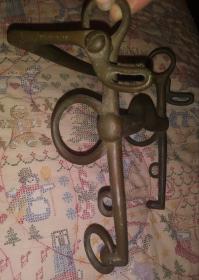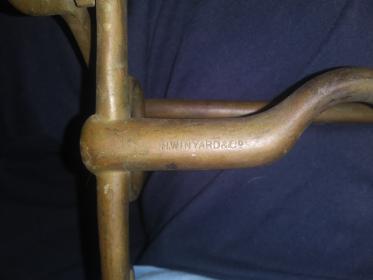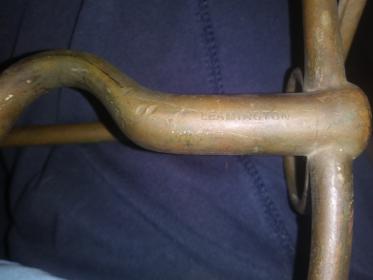The sides are what I would call a Pelham bit. Usually seen with that low port mouthpiece, but other mouthpieces were easily available with the Pelham cheeks. Used with 4 reins, very popular in the 1950s-60s, fell out of favor in the early 1970s. Quite versitile with both a curb and snaffle rein, useful on many horses, in various disciplines, though I mostly see them on horses going over fences in photos.
I believe the metal strap is a chinstrap/curbstrap of some kind. Obviously been “customized” for some specialized use. Chinstrap looks nicely made to go on the bit. Not sure what the slot ends were fastened too, so chinstrap engaged when needed.
It is possible you have the chinstrap flipped over backwards, when it should be on the front of the bit as a noseband. Not a chinstrap at all! Can’t tell by the photo if strap is big enough to go over a nose. The slot ends would then make more sense at the back of the bit, for a leather strap under the jaw.




